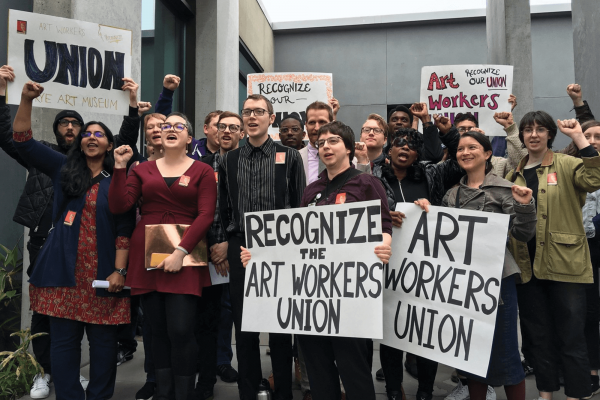A FEW MONTHS ago, I found myself in a familiar position: at a museum, taking selfies with an artwork, which, in my defense, was made of mirrored surfaces in the shape of Queen Elizabeth II’s face. The opportunity was too good to resist. There I was, snapping away, long coat and checkered socks coordinating with a print near me that read, “Empire buying begins at home.” That’s when I heard disgruntled murmurs.
I pretended to photograph more art, all the while inching closer to the source—museum security guards. I listened to them commiserate over their low pay and meager benefits compared to salaried employees, and the unfairness of hourly wages in the case of emergency museum closings. I completely agreed with them.
Since my introduction to art museums, it’s become increasingly clear that the values many tout (equity, multiculturalism, and inclusion, for example) are far too vulnerable to the wiles of capital, capital, and capital. Not only is there a problem with wage and benefit gaps, there’s an interesting breakdown of who works in museums and what positions they hold. I remember my first visit to the Art Institute of Chicago: I was an awed high school freshman racing down hallways with my friends, trying to complete an educational scavenger hunt. I did well, but that’s in part because my teachers didn’t ask me to find a person of color who wasn’t a security guard.
Read the Full Article

